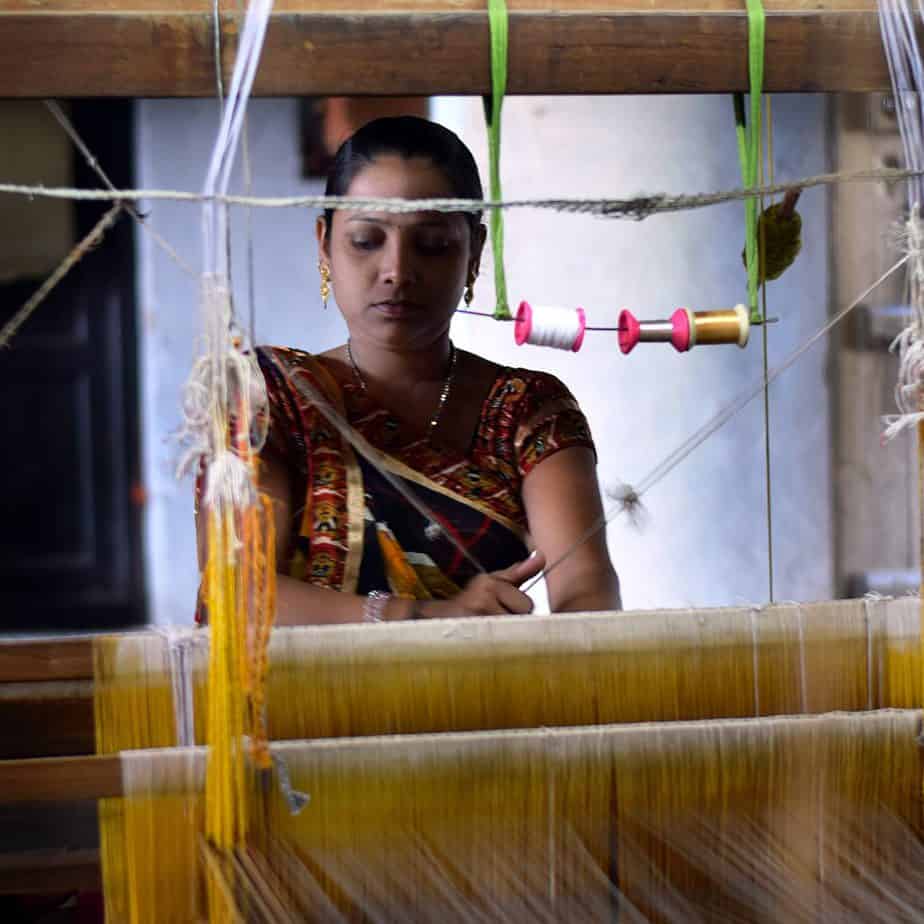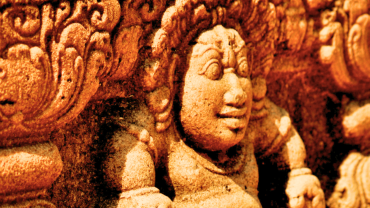Tradition of Handlooms – History
The tradition of Handlooms, It was in 543 BC that prince Vijaya with 700 of his followers, landed on the coppery shores of Thammennawa along the Western coast of Sri Lanka. Cast out to sea by his father, the Gujarati King Vijayabahu, for his mischievous behavior, his ships landed to begin the Sinhala civilization.
The Mahayana or the “Great Chronicle” says that when he stepped ashore, he first saw the Yaksha princes Kuweni spinning soft threads of cotton on her spinning wheel and it is since then that the generations of Sri Lankans have passed along the tradition of the loom.

If you were to ever visit a handloom workshop, you will see meditative artists weaving on their handlooms. The artisans, mostly elderly ladies, coordinate the use of their eyes, hands, feet, and mind in perfection and the outcome is beautiful yards of colorful textile. The life of these cotton textiles begins with the dyeing of 100% cotton yarn into vibrant colors only limited by your immigration.
After a 36 – hours process of boiling, coloring, washing, and drying, the colored yarn is ready for the waving process. Their journey takes us next to the handloom workshops. First, the dyed yarn is spun into bobbins that are then used to create the wrap, which dictates the design of the length of the fabric. This wrap is then transferred to the loom and woven into Saris, Sarongs, fabrics, and other handloom textile products. This entire process can take up to 48 hours, depending on the design, and more importantly, on a human angel, it touches the hands and therefore the lives of many.

In Sri Lanka, the handloom industry is an important cottage industry of rural women and men depending on it for a living. The industry provides its artisans a comfortable working environment within the vicinity of their own homes and also flexible hours to attend to their agricultural and home garden plots. Today, although the industry is not as vibrant as it used to be, Sri Lankan weavers have succeeded in fashioning a distinctive identity of their own by converting the traditional woven pattern and color schemes into beautiful modern textile designs.
The industry also continues to provide a livelihood for a large number of households in the country particularly in the Northwestern, South, Central, and Eastern provinces of the country. You can also find high-quality handloom products by several established companies in the local market and these beautiful and unique products make excellent memorabilia of the warm and beautiful Island of Sri Lanka.





Comment (0)